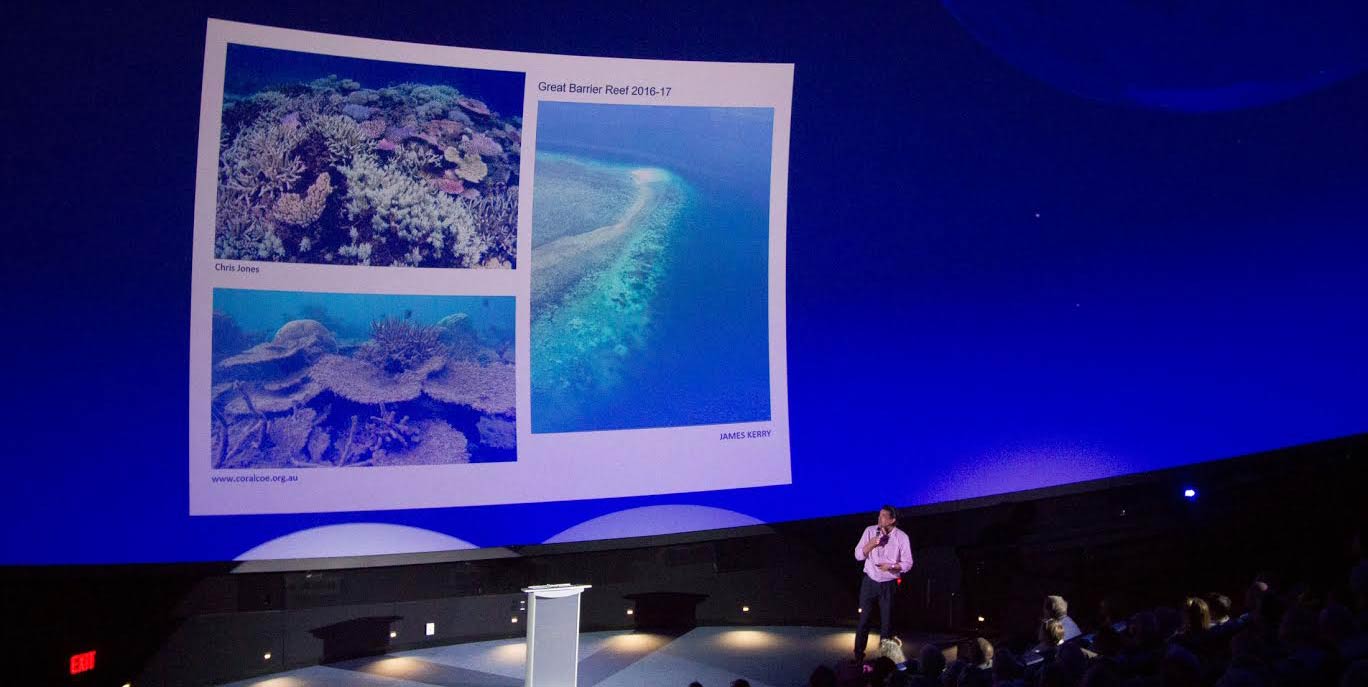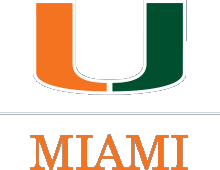

The Rosenstiel School’s final lecture of the 2017 Sea Secrets series focused on using science diplomacy to bring marine science together in the U.S. and Cuba and was held at the new Frost Science Museum.
At a time when science seems under attack and truth is contested, researchers in Miami are using the discipline to bridge the 90-mile and decades-long gap with scientists in Cuba.
The recent re-establishment of diplomatic relations between Cuba and the U.S. is opening new avenues for scientific investigation and environmental conservation.
“It’s funny—usually the environment is the last thing we agree on but in this case, it’s what brought the two countries together,” said Fernando Bretos, curator of ecology and director of MUVE (Museum Volunteers for the Environment) at the new Phillip and Patricia Frost Museum of Science, and the first lecturer.
The discussion, titled “Coral Reefs and Science Diplomacy: Bridging the Gap with Cuba,” was held Thursday in the planetarium of the state-of-the-art Frost Science Museum in downtown Miami and was the first scientific talk hosted at the Museum.
“We are eager to work together on what we anticipate will be a long collaboration between the university and the museum,” said Dean Roni Avissar of the Rosenstiel School of Marine and Atmospheric Science, who opened the final lecture of the 2017 Sea Secrets Lecture Series, presented by the Rosenstiel School and the Ocean Research and Education Foundation.
About the Video
Andrew Baker, associate professor of marine biology and ecology at the Rosenstiel School of Marine and Atmospheric Science, and of Rosenstiel’s Coral Reef Futures Lab, presents at the final Sea Secrets lecture of 2017.
Join the Conversation:
Follow on
Twitter:
UM Rosenstiel School of Marine and
Atmospheric Science, @UMiamiRSMAS
University of
Miami, @univmiami
UM News, @univmiaminews
Bretos, who has a personal connection to Cuba—his parents came to the United States under Operation Pedro Pan—has been collaborating with Cuban marine scientists for 18 years. His research focuses mainly on sea turtles in Guanahacabibes National Park and UNESCO Biosphere Reserve, located on the western tip of the island.
The park, and other coastal areas of the island, have some of the most pristine waters and wild marine ecosystems.

Bretos highlighted the Trinational Initiative for Marine Science and Conservation in the Gulf of Mexico and Western Caribbean, started in 2007, as a meeting platform for Cuban and U.S. scientists, and expanded to include Mexican scientists, he said, to help to buffer any tension between the U.S. and Cuba and allowed the work to flow much more smoothly.
“Cuba is somewhat of a mecca for turtles,” said Bretos, an alumnus of the Rosenstiel School. “It has a huge amount of beach, feeding habitat and large expanses of sea grass.”
There are progressive coastal development and preservation policies in place in Cuba, said Bretos, and coastal areas are managed pretty well, but it’s an issue of scale, which may become problematic with increasing tourism to the island.
Increasing tourism to Cuba, and global anthropogenic changes to the environment are harmful to coral reef ecosystems as well as sea turtles and other marine mammals.
“Coral reefs are dying around the world in great numbers, for many reasons, but perhaps the most important reason is climate change and warming sea surface temperatures,” started Andrew Baker, an associate professor of marine biology and ecology at the Rosenstiel School and the second lecturer.
He started off with the bad news, he said, to provide some background on the good news—using molecular genomics and collaboration with Cuban scientists to help save the world’s reefs—and to communicate why Cuba’s coral reefs are so interesting and how they can play a role in replenishing dying or dead corals.
The warming sea surface temperatures stress corals, causing the critical partnership of algal symbionts—zooxanthellae, which live on the corals and give them their beautiful colors—to break down in a process called coral bleaching. During coral bleaching, the corals expel these algae, lose their coloration and turn white, and often die.
Corals can recover from bleaching, explained Baker, but if they don’t, they die.
“As a coral biologist and conservation scientist, the goal is, if we can’t prevent corals from bleaching, we can at least give them routes to recover so that they don’t go down this one-way path and point of no return,” said Baker, head of Rosenstiel’s Coral Reef Futures Lab.
One solution Baker is working on to help save the world’s coral reef ecosystems? A method that uses the same science behind popular DNA genome sequencing services like 23andme and Ancestry.com.
“Using these molecular genomic methods, we can assess the connectivity of corals around all these different regions (in the Caribbean), in an attempt to try and figure out how these coral reefs are connected to one another,” he said.
Analyzing satellite imagery, Cuba is very interesting from an environmental conservation perspective, explained Baker. Heat maps of water around the region show that there are very distinct thermal temperatures throughout the area.
“There are areas in Cuba that are both exceptionally cool and exceptionally warm; the difference is about 2 degrees Celsius, or about 3.5 degrees Fahrenheit,” said Baker. “That’s the global temperature increase we’re expecting to see within the next century. Essentially, corals in one area could outlast by a century the corals in another area.”
Corals along the southern coast of Cuba are particularly heat-tolerant. Baker and his fellow researchers are using heat maps to help them consider moving the more heat-tolerant corals to new places, as a way of helping restore reefs in one area, in the hope that corals will be more heat-tolerant overall and better able to replenish and recolonize reefs.
Baker pointed out that coral bleaching is going to become more frequent and more severe in the coming years. The amount of coral that we’re losing means that we may lose coral reefs as we know them, he said, as these systems that generate lots of biodiversity.
“Biological diversity is the stuff of life that ultimately provides robustness to ecosystems,” said Baker. “Biologists will tell you this all the time, that diversity provides resilience.”
Baker’s research focuses on interventions that try to increase biological diversity in populations.
“There’s a very good argument to be made about the assisted immigration of Cuban corals to the U.S. to boost diversity and ultimately resilience,” said Baker. “And there’s some parallels here in human life as well.”
He recognized that some of his talk focused on the bad news of how climate change is affecting our coral reefs, including how the reefs are the first ecosystem that we’re likely to lose as a result of global warming. But we can’t lose hope, he added.
“We have to balance the cost of doing nothing with the fear of doing something,” said Baker. “Science has an important role to play in determining what that something should be.”
- JESSICA M. CASTILLO / UM News
